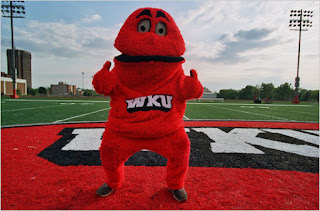Italian Supreme Court holds that an unauthorized derivative work may be both infringing and protectable
 |
| Big Red |
Can copyright vest in mascots and characters? This, in a nutshell, is the question that the Italian Supreme Court had to address in Ralph v Mediaset and Others, decision 14635/2018 [Katpat to Valentina Borgese for the heads up and the text of the decision].
The Italian court answered in the affirmative, and provided some helpful guidance on copyright subsistence, derivative works, and infringement.
What happened?
In 1979 Ralph Carey created what would become the mascot of the Western Kentucky University (WKU) basketball team, a red character named Big Red. In 2009 he brought proceedings before the Milan Court of First Instance against broadcasters RTI and Mediaset and the creator of well-known TV programme Striscia La Notizia, claiming that the likeness of mascot/TV character Gabibbo (‘operating’ since 1990) would infringe copyright in Big Red.
The Milan court sided with Carey: in 2012 it held that Gabibbo infringed copyright in Big Red. It also awarded damages for EUR 200,000.
Further to an appeal to the Milan Court of Appeal, however, Gabibbo was found non-infringing. The appellate court held that Gabibbo [the translation from Italian is mine] “displays an amount of originality that is such as to make it [or, rather, him] a different work”. Nonetheless, it acknowledged that Big Red, a “goofy humanoid”, would be eligible for copyright protection. The court did not address the issue of the Gabibbo being a derivative work and what is known in Italian copyright law as 'plagio evolutivo'.
Carey thus appealed this new decision to the Italian Supreme Court, claiming that the appellate court – in holding the Gabibbo non-infringing – had erred in its interpretation and application of relevant provisions in the Italian Copyright Act.
Copyright protection of the “goofy humanoid”
With regard to copyright protection of Big Red, the Supreme Court noted that this would be deserving of protection as pantomimic work in relation to: its comical character, appearance, and sparkling personality.
However, the idea of creating a humanoid mascot with a humorous temper could be expressed in several different ways.
At this point the Supreme Court (oddly) referred to the concept of individual character in design law, as interpreted by the Court of Justice of the European Union (CJEU) in PepsiCo and Easy Sanitary Solutions, to hold that the overall impression produced by Gabibbo is different from Big Red.
In particular, unlike Big Red, Gabibbo is: shorter, fatter, does not wear shoes, is not athletic, has a smooth skin, and sports different accessories (a bow tie, cuffs, and some sort of apron-shirt). In addition, Gabibbo is characterized by a loud voice, and speaks in a dialect that is typical of the city of Genoa, while Big Red is mute. Also Gabibbo is a reporter, while Big Red is just a mascot that invites fans to cheer for and support the team.
A derivative work and, thus, an infringement?
The Supreme Court held that the Court of Appeal had erred in its interpretation of the law (with particular regard to ‘plagio evolutivo’ under Articles 4 and 18 of the Italian Copyright Act), by excluding that an original work derived from an existing work could not be protectable and infringing at the same time. The making of derivative works falls under the control of the owner of the copyright in the first work: it is not sufficient that the latter work is original to exclude infringement of copyright in the first work. This means that even if a work has been derived (copied) from an earlier work and displays an original character of its own, it may be nonetheless an infringement of copyright in said earlier work.
And, noted the Court, the creator of Striscia La Notizia was well-aware of Big Red’s existence: in a number of interviews he even admitted that Gabibbo had been derived from Big Red.
The Supreme Court, therefore, sent the case back to the Milan Court of Appeal (though in a different composition), to undertake a new assessment on the merits of the case, and determine whether Gabibbo is an infringement of copyright in Big Red.
Italy, like most EU Member States, does have an open-ended list of protectable works: this means that – unlike countries like the UK, Ireland and Austria – the law does not require to determine what category a certain work belongs to for copyright protection to subsist.
As readers will know, for unconventional works life has not always been easier in jurisdictions with closed lists of protectable categories: in the UK, for instance, copyright protection has been denied to the assembly of a scene (Creation Records) and the Stormtrooper Helmet from the Star Wars films (Lucasfilm, in which the Supreme Court rather oddly also required an artistic intention on the side of the author for a work to be considered artistic). In addition, for a long time uncertainties have subsisted in relation to copyright protection of TV formats [see here].
The Big Red/Gabibbo dispute is a helpful reminder that a work may be indeed eligible for self-standing copyright protection, while being also an infringement of someone else’s copyright. If the latter work reproduces protectable elements of the former work, then – as per the CJEU Infopaq decision – this might be sufficient for an issue of potential infringement to arise … even if you’re a goofy humanoid!
[Originally published on The IPKat on 18 October 2018]





Comments
Post a Comment